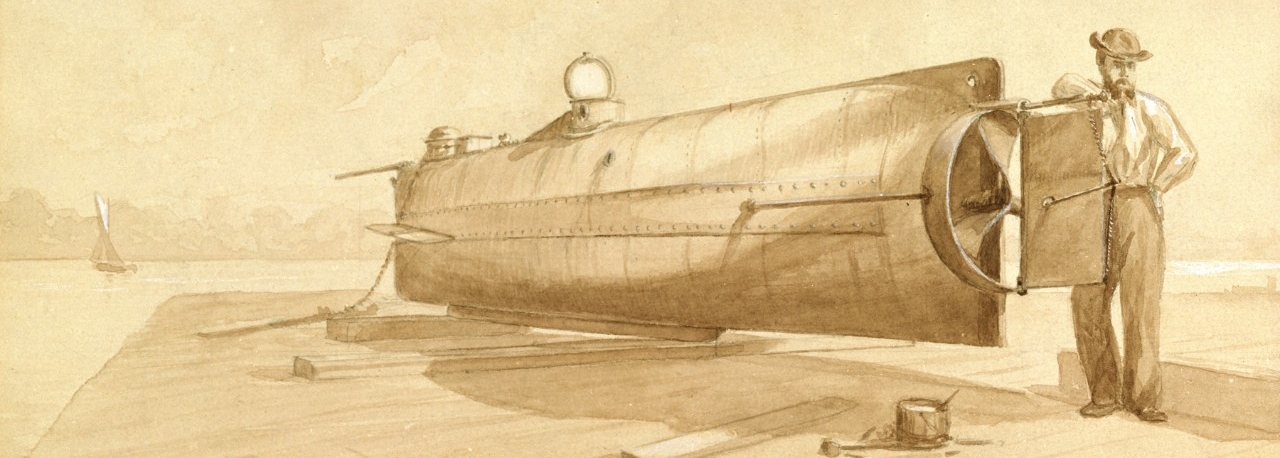
A View From the Periscope
For centuries men experimented with submersible vessels in hopes of finding ways other than ramming, boarding, or intense cannon fire to sink enemy warships. In 1776 the Turtle made the first submarine attack on a warship in 1776. Nearly 90 years later the Confederate submarine H.L. Hunley made history by sinking the Housatonic.
Not until World War I did technological advances change the submarine from maritime oddity to an important asset in naval warfare. During the war, American submarines performed two functions--patrolling American seacoasts and harbors and deploying to Europe to keep the sea lines of supply open.
Between the wars significant improvements in submarine design and capabilities included growth in size and increase in speed. Viewed as an anti-ship weapon, the Navy trained submarine crews to scout for their battleship fleet and to attack the enemy's warships. During World War II, success in the silent war included targeting of merchant and convoy ships and sinking about one-third of the Imperial Navy.
The development of nuclear propulsion spearheaded by Admiral Hyman G. Rickover and the Atomic Energy Commission freed submarines from any need to surface during patrols. Today's Navy has ballistic missile submarines to deter foreign nuclear attacks and attack submarines used in anti-submarine and anti-surface ship missions.
Drawn to its sleek yet hidden shape, artists have long tried to capture the mystery of the submarine and the adventurous men who risk underwater combat.
Note: click on image to make it larger


